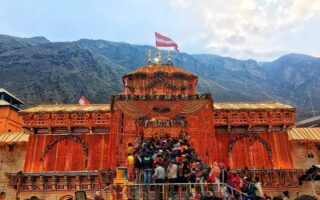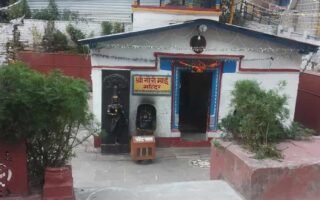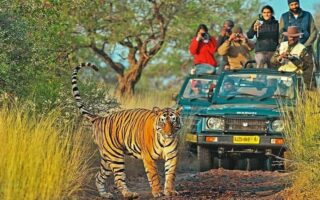India, a land where varied cultures, traditions and religions live in perfect harmony, has a long Buddhist line of history. From the birthplace of Lord Buddha to his Samadhi, India had been an epicentre of Buddhist tradition. While some of these historical places now fall in neighboring countries like Nepal, what India does no lack is a bee line of Buddhist monasteries. The monasteries, located mostly in north and northeastern India are quiet, serene places, where the teachings of non-violence still echo. The traveller in you would find in these places of architectural splendour and religious dimension, the peace and tranquility of a placid lake, which is both refreshing and rejuvenating.
Ghum Monastery
- Location: Ghum, Darjeeling, West Bengal
- Best Time: March to June, Sept to Dec
- How to Reach: 8 km from Darjeeling, via taxi or bus.
- Sightseeing: Batasia Loop, Peace Pagoda, Himalayan Mountaineering Institute.
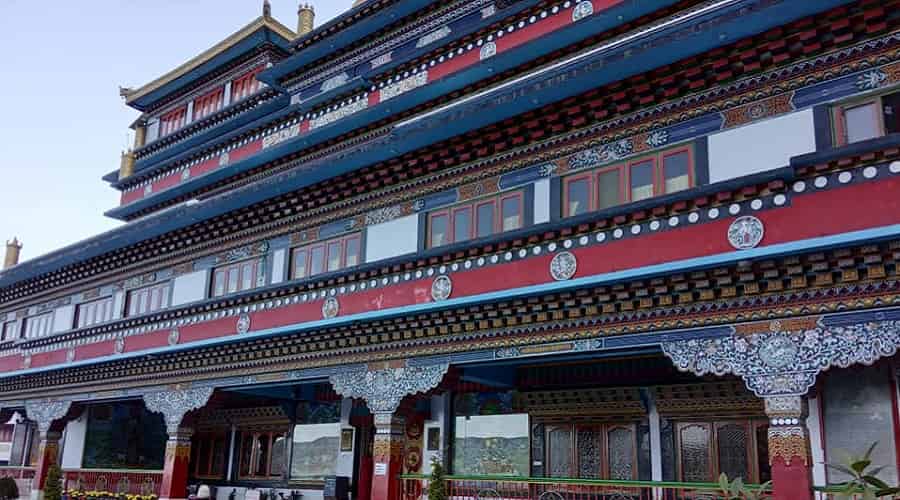
Perched on a high mountain in northeastern India overlooking the sea, stands the centuries old Ghum Monastery which is an abode for over 60 Buddhist monks. The place with its scenic splendour could take your breath away, even as the trek to the location through rocky terrain is a bit adventurous. Built in 1850 on a tall mountain which rises 8000 feet above the sea level, the place belong to the yellow sect of Buddhist monks.
The place, which has a simple feel to it in tune with the Buddhist teachings, has a single chambered temple with a few residential huts around it. One of the most enchanting features of the monastery is a Maitreya Buddha statue, rising 15 feet from the base structure of the temple. The statue, which shines in a golden hue, is indeed covered with pure Gold polish from top to bottom and is embedded with many precious stones. The place also has a good collection ancient Buddhist literature including the rare text Kangyur, the Tibetan Buddhist canon running into 108 volumes. Though located 6 km away from Darjeeling in the Indian state of West Bengal, the monastery has a rich Tibetan Buddhist look.
Namdroling Nyingmapa Monastery
- Location: Bylakuppe, Coorg, Karnataka
- Best Time: Oct to March
- How to Reach: 85 km from Mysore, accessible by road.
- Sightseeing: Golden Temple, Dubare Elephant Camp, Nagarhole National Park.
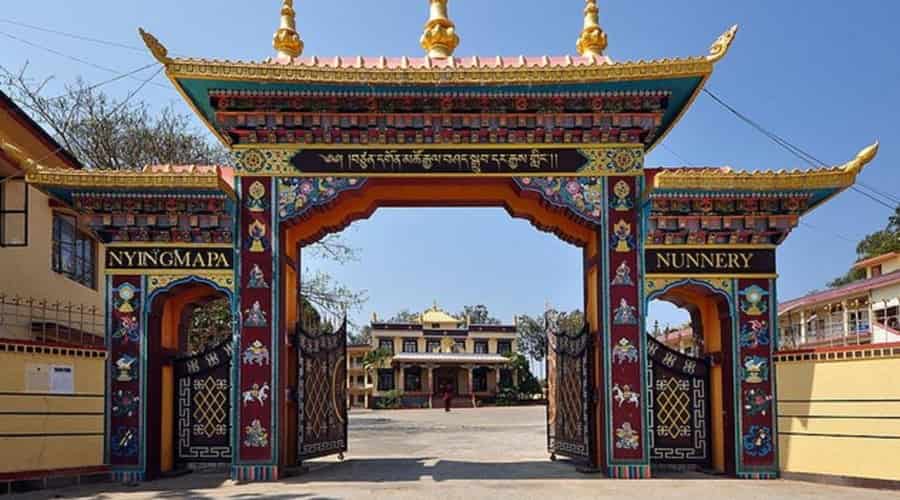
One of the biggest monasteries of Tibetan Buddhist tradition in the country, Namdroling, located in the Mysore district of Karnataka, is known to be the abode of thousands of monks. The monastery, which was established by His Holiness, Pema Norbu Rinpoche of Tibet, has been the training ground for many from the great lineage of Tulkus or Lamas of the Palyul tradition who are known to be the guardians of the Buddhism and descendants of Buddha himself. The fifth Karma Kuchen Rinpoche, the third Choktrul Rinpoche and the third Rago Choktrul Rinpoche have all contributed their share to the rich culture of this magnificent monastery.
The monastery also has distinctive murals and wall painting describing the life and works of Gautama Buddha. The statue of Buddha inside the temple, which is located in the middle of residential settlements of the monks, is known to attract pilgrims and travellers from across the world. Another special feature of the place is also the rigorous 30-day retreat for the monks, which the place offers making them dedicated to the religion and its cultures.
Tabo Monastery
- Location: Tabo, Spiti Valley, Himachal Pradesh
- Best Time: April to Oct
- How to Reach: 50 km from Kaza, accessible by road.
- Sightseeing: Tabo Caves, Pin Valley, Chandratal Lake.
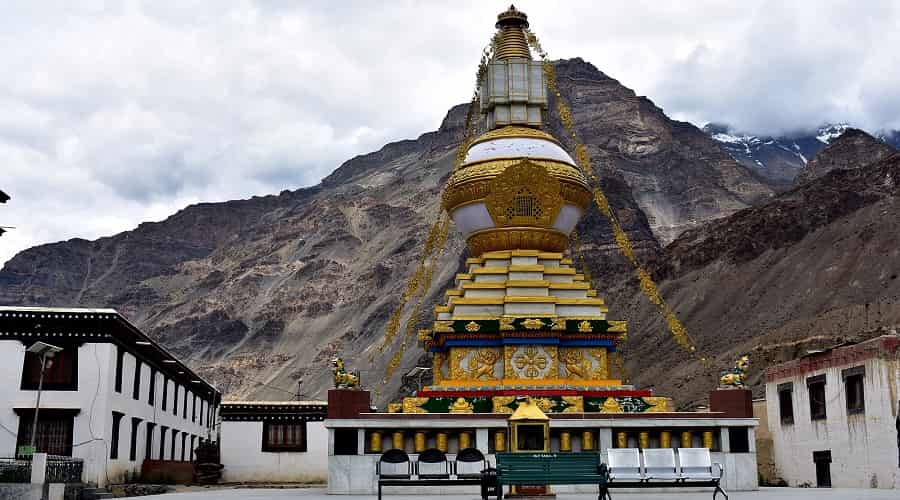
The monastery, which is over 1000 years old, located in the Himachal Pradesh which borders Tibet is known to be one of the most popular Buddist shrines of the world. The monastery, located at a height of 3050 m above sea level, has nine temples dedicated to Lord Buddha. The most important among the temples include the Temples of Enlightened Gods, Golden Temple, the Mystic Mandala Temple and Bodhisattva Temple.
The temple of Enlightened Gods which houses the four fold figure of Vairocana, one of the spiritual sons of Adi-Buddha is a must see among the nine temples. The stature of Vairocana depicted in the temple is sure to catch the sight of the traveller as the Lord sits there spinning the `Wheel of Law’. The place is also known for the stucco images which are carved on the walls and ceiling. Colourful paintings depicting the life of Lord Buddha made by travellers from Kashmir adorn the walls of the temple. There is also a sanctum just behind the assembly hall that houses five Bodhisattvas of Good Age.
Another important temple, the Golden temple, was once covered with gold polish and now attracts the tourists for murals, which cover its walls and ceilings. The temple of Mystic Mandalas is where monkhood as a concept initiated. For the traveller the place would be interesting as it is adorned with the massive painting of Vairocana who is depicted as being surrounded by the eight Bodhisatvas. The bodhisattva Maitreya temple is known for the six feet high image of bodhisattva surrounded by murals and paintings of utmost artistic beauty.
Enchey Monastery
- Location: Gangtok, Sikkim
- Best Time: March to June, Sept to Dec
- How to Reach: 120 km from NJP, via taxi.
- Sightseeing: Rumtek Monastery, Tsomgo Lake, Nathula Pass.
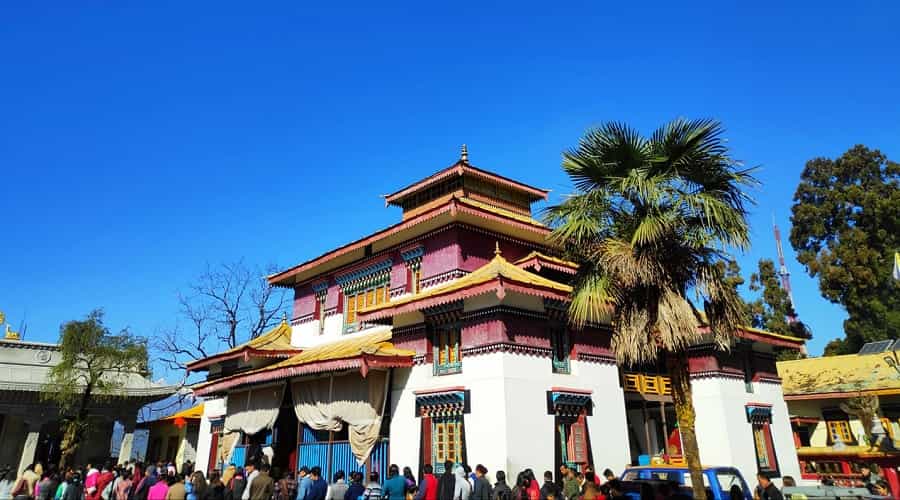
In the picturesque land of Gangtok, Sikkim, stands the Enchey Monastery or the solitary temple. As the name echoes, the place is known for its tranquil and placid surroundings, undisturbed by the mundane busy life. When one sets foot into the domineering structure of this peaceful temple one would get the feel of being far away from civilization and its worries. The monastery is an abode for 90 monks from Nyingma order. The best time to visit the monastery will be during the months of June to October. However, what draws crowds to this place of utter quiet is an energetic dance festival `Chaan’ which is held once in three years! The mystical dance fete, which is held on the 18th and 19th day of the 12th month of the Tibetan calendar, should not be given a miss for it is the meeting point of various Buddhist traditions including that of a worldly Buddha (laughing Buddha). Another festival celebrated at the monastery is Pang Lhabsol, a symbol of love between Bhutias and Lepchas.
Hemis Monastery
- Location: Hemis, Ladakh
- Best Time: May to Sept
- How to Reach: 45 km from Leh, via taxi.
- Sightseeing: Hemis Festival, Thiksey Monastery, Pangong Lake.
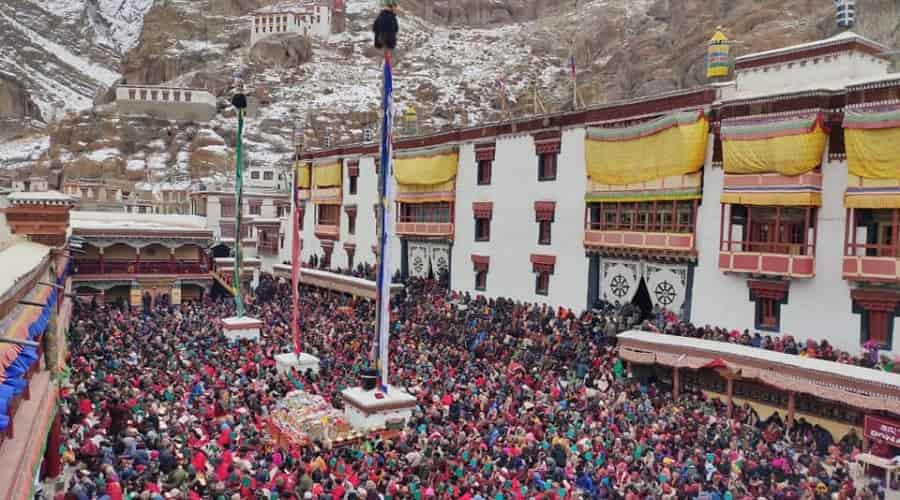
A glorious Buddhist monastery located near the Himalayas is just the spot you might want to visit during your summer tour. Situated at a distance of 43 lm from Leh, Ladakh, the monastery is believed to have been constructed as early as in 1630. The monastery is the headquarters of all the 140 Drukpa order of monasteries in Ladakh.
However, what attracts tourists the most to the monastery will be the Hemis Festival, celebrated in commemoration of the birth anniversary of Guru Padmasambhava , the founder of Tantric Buddhism in Tibet. During the festival, which takes place from June 9 to 11 every year, has many lamas and local people participating in it. The Lamas wear colourful costumes and perform on the sacred plays called ‘Chhams’ around the center flagpole, accompanied by music from cymbals, drums and horns. The fair held in association with the festival should not be missed as it has artistic items on display.
Tawang Monastery
- Location: Tawang, Arunachal Pradesh
- Best Time: March to Oct
- How to Reach: 300 km from Tezpur, via road.
- Sightseeing: Tawang War Memorial, Sela Pass, Madhuri Lake.
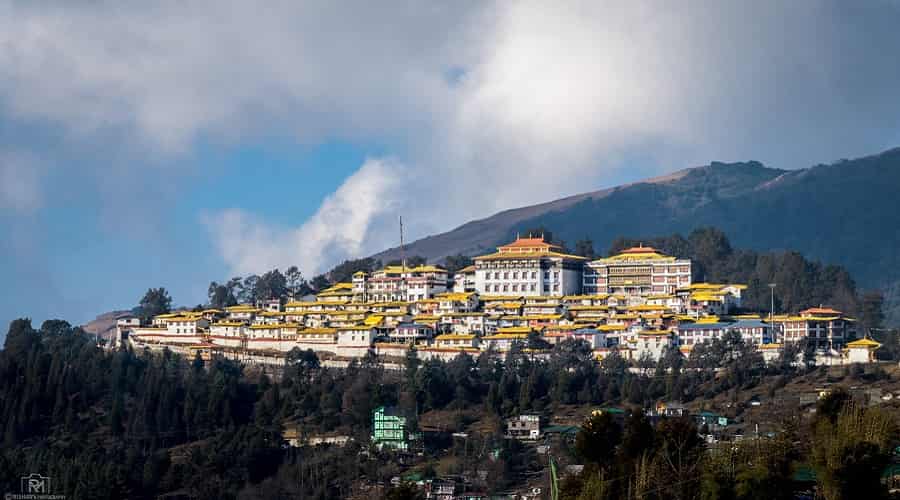
The glorious monastery of Tawang is perched at height of 3500 m above sea level giving the traveller a bird’s eye view of the panoramic settings of the lofty ranges and snowcapped peaks of the breathtakingly beautiful Himalayas. Located 180 km from Bomdila, Arunachal Pradesh, the place is known as one of the most picturesque monasteries in the country.
The three-storied fortified monastery has a total base area of 135 sq with a compound wall, which is 610 m long. The monastery houses 65 residential buildings for the monks. The most attractive feature of the monastery will be its main shrine room, which is richly decorated with several statues including a beautiful thousand-armed Chenrezig or Avalokitesvara. There are various religious texts available at the place.
A festive celebration of the Tibetan New Year, Losar, is unique to the place. The spectacle of a thousand monks dressed in scarlet costumes celebrating the New Year is a sight not to be missed. The heavy tranquility if monastery lifts its shroud with the festive spirits seeping in. With the dance, music and merry making, the monastery blooms during this period.
